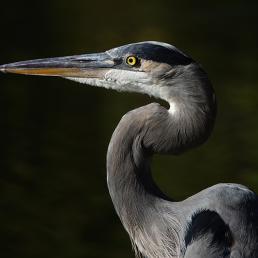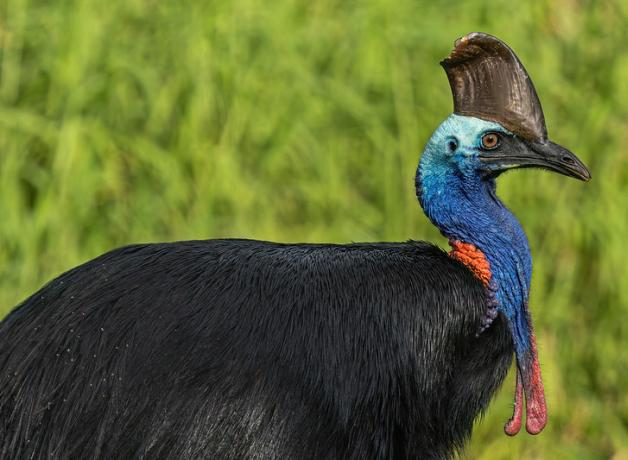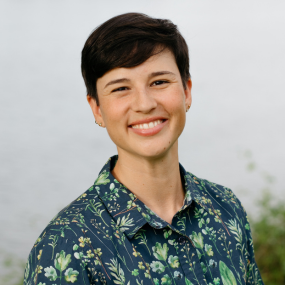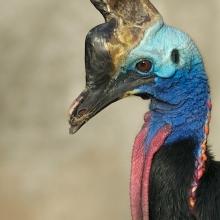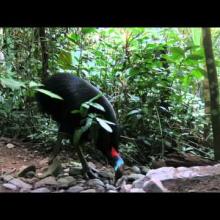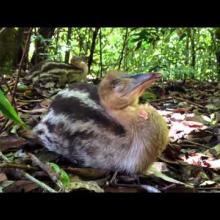

Join BirdNote tomorrow, November 30th!
Illustrator David Sibley and actor H. Jon Benjamin will face off in the bird illustration battle of the century during BirdNote's Year-end Celebration and Auction!
You might think the first bird species that humans raised in captivity would be a relatively small one, like a chicken. But evidence suggests that people in New Guinea reared the cassowary, often called the world’s deadliest bird, as much as 18,000 years ago, long before the domestication of chickens. The remains of cassowary eggs and bones at archaeological sites in New Guinea indicate that people gathered the eggs, possibly allowing the more mature eggs to hatch into chicks.
BirdNote®
Raising the World’s Deadliest Bird
Written by Conor Gearin
This is BirdNote.
You might think the first bird species that humans raised in captivity would be a relatively small one, like a chicken.
[Rooster call]
[Soundscape from Southern Cassowary habitat]
But evidence suggests that people in New Guinea reared the cassowary, often called the world’s deadliest bird, as much as 18,000 years ago, long before the domestication of chickens.
[Southern Cassowary growl call]
The remains of cassowary eggs and bones at archaeological sites in New Guinea indicate that people gathered the eggs, possibly allowing the more mature eggs to hatch into chicks.
All cassowaries possess fearsome sharp toes that have been known to kill or seriously injure humans. While Northern and Southern Cassowaries can reach heights of five feet or more, the Dwarf Cassowary stands just three and a half feet tall.
Researchers suspect that by collecting nearly-hatched cassowary eggs, probably from the Dwarf Cassowary, people could have easily reared their chicks. Today in New Guinea, captive cassowary chicks become imprinted on their human carers, allowing people to raise them to adulthood.
[Dwarf Cassowary chick calls]
Cassowaries may not be the cuddliest of birds. But people found a clever way to live beside them long ago.
[Southern Cassowary growl]
For BirdNote, I’m Ariana Remmel.
Want more BirdNote sounds, images and stories delivered straight to your inbox? Subscribe to our weekly newsletter for a preview of the week's shows, stories, and stunning photos every Friday morning. Visit BirdNote.org to sign up today.
###
Senior Producer: Mark Bramhill
Producer: Sam Johnson
Managing Editor: Jazzi Johnson
Managing Producer: Ariana Remmel
Content Director: Jonese Franklin
Bird sounds provided by The Macaulay Library of Natural Sounds at the Cornell Lab of Ornithology, Ithaca, New York. Southern Cassowary ML 203983681 recorded by Phil Gregory, and Dwarf Cassowary ML 203987101 recorded by Hector Gomez de Silva.
Ambient Recording of Southern Cassowary ML 203970371 recorded by Phil Gregory. BirdNote’s theme was composed and played by Nancy Rumbel and John Kessler.
© 2023 BirdNote April 2023 / 2025
Narrator: Ariana Remmel
ID# cassowary-02-2023-04-19 cassowary-02
Reference:
https://www.pnas.org/content/118/40/e2100117118
https://www.psu.edu/news/research/story/late-pleistocene-humans-may-hav…;
